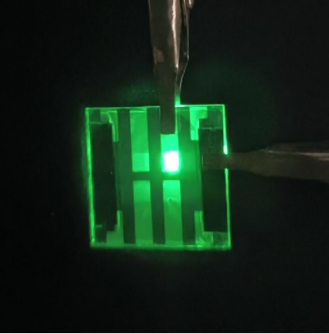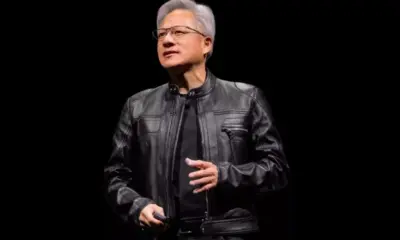Science
Researchers Develop Paper-Thin LED Mimicking Sunlight’s Glow

Researchers have created a groundbreaking paper-thin LED that emits a warm, sun-like glow, potentially transforming indoor lighting and display technologies. This innovative development was reported in the journal ACS Applied Materials & Interfaces and could pave the way for more natural indoor lighting solutions.
The new light-emitting diode (LED) design not only aims to enhance the aesthetic of indoor spaces but also to support better sleep patterns by avoiding harsh artificial lighting. According to Xianghua Wang, a corresponding author of the study, “This work demonstrates the feasibility of ultra-thin, large-area quantum dot LEDs that closely match the solar spectrum.” These devices could lead to next-generation displays that are easier on the eyes and beneficial for well-being.
In the past, researchers have experimented with flexible LEDs that produce a candle-like glow using phosphorescent dyes, but achieving a true representation of sunlight has remained a challenge. Traditional quantum dots, which convert electric energy into colored light, have struggled to replicate the full spectrum of sunlight, particularly in the yellow and green wavelengths where sunlight is most intense.
To address this, Lei Chen and colleagues set out to develop quantum dots capable of mimicking the natural glow of sunlight when integrated into a thin, white quantum dot LED (QLED). The research team collaborated with Wang’s group, which proposed a method to create slim electrically conductive materials that operate at lower voltages.
The researchers synthesized quantum dots in red, yellow-green, and blue, encased in zinc-sulfur shells. By adjusting the ratios of these colors, they identified the combination that produced an emission spectrum closest to sunlight. They constructed the QLED atop an indium tin oxide glass substrate, layering electrically conductive polymers, the quantum dot mixture, and metal oxide particles, concluding with a layer of aluminum or silver. The resulting quantum dot layer measures only tens of nanometers thick, comparable to the thickness of wallpaper.
Early tests indicated that the thin QLED performed optimally under an 11.5-volt power supply, emitting a bright and warm white light. The light showed increased intensity in red wavelengths and diminished intensity in blue wavelengths, which is considered better for sleep and eye health. The researchers noted that objects illuminated by the QLED appeared true to their actual colors, achieving over 92% on the color rendering index.
In subsequent experiments, the team created 26 white QLED devices using the same quantum dots but varying the electrically conductive materials to optimize the operating voltage. These iterations required only 8 volts to reach maximum brightness, with about 80% of the devices exceeding the brightness required for computer monitors.
This study received funding from the National Natural Science Foundation of China, the Natural Science Foundation of Anhui Province, and the Major Science and Technology Special Project of Zhongshan City. The findings underscore a significant step towards developing lighting solutions that are not only efficient but also enhance the quality of life for users by providing a more natural light experience.
The American Chemical Society (ACS), established in 1876 and chartered by the U.S. Congress, is dedicated to advancing scientific knowledge and integrity. The Society’s mission emphasizes the transformative power of chemistry to improve lives globally.
-

 Technology4 months ago
Technology4 months agoDiscover the Top 10 Calorie Counting Apps of 2025
-

 Health2 months ago
Health2 months agoBella Hadid Shares Health Update After Treatment for Lyme Disease
-

 Health3 months ago
Health3 months agoErin Bates Shares Recovery Update Following Sepsis Complications
-

 Technology3 weeks ago
Technology3 weeks agoDiscover 2025’s Top GPUs for Exceptional 4K Gaming Performance
-

 Technology4 months ago
Technology4 months agoDiscover How to Reverse Image Search Using ChatGPT Effortlessly
-

 Technology2 months ago
Technology2 months agoElectric Moto Influencer Surronster Arrested in Tijuana
-

 Technology4 months ago
Technology4 months agoMeta Initiates $60B AI Data Center Expansion, Starting in Ohio
-

 Technology4 months ago
Technology4 months agoRecovering a Suspended TikTok Account: A Step-by-Step Guide
-

 Health4 months ago
Health4 months agoTested: Rab Firewall Mountain Jacket Survives Harsh Conditions
-

 Lifestyle4 months ago
Lifestyle4 months agoBelton Family Reunites After Daughter Survives Hill Country Floods
-

 Technology3 months ago
Technology3 months agoUncovering the Top Five Most Challenging Motorcycles to Ride
-

 Technology4 weeks ago
Technology4 weeks agoDiscover the Best Wireless Earbuds for Every Lifestyle



















